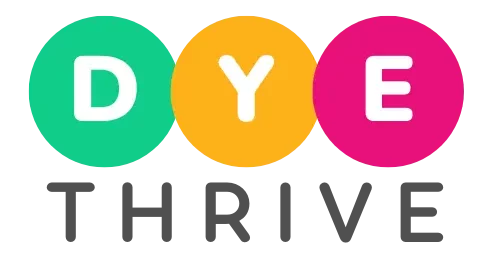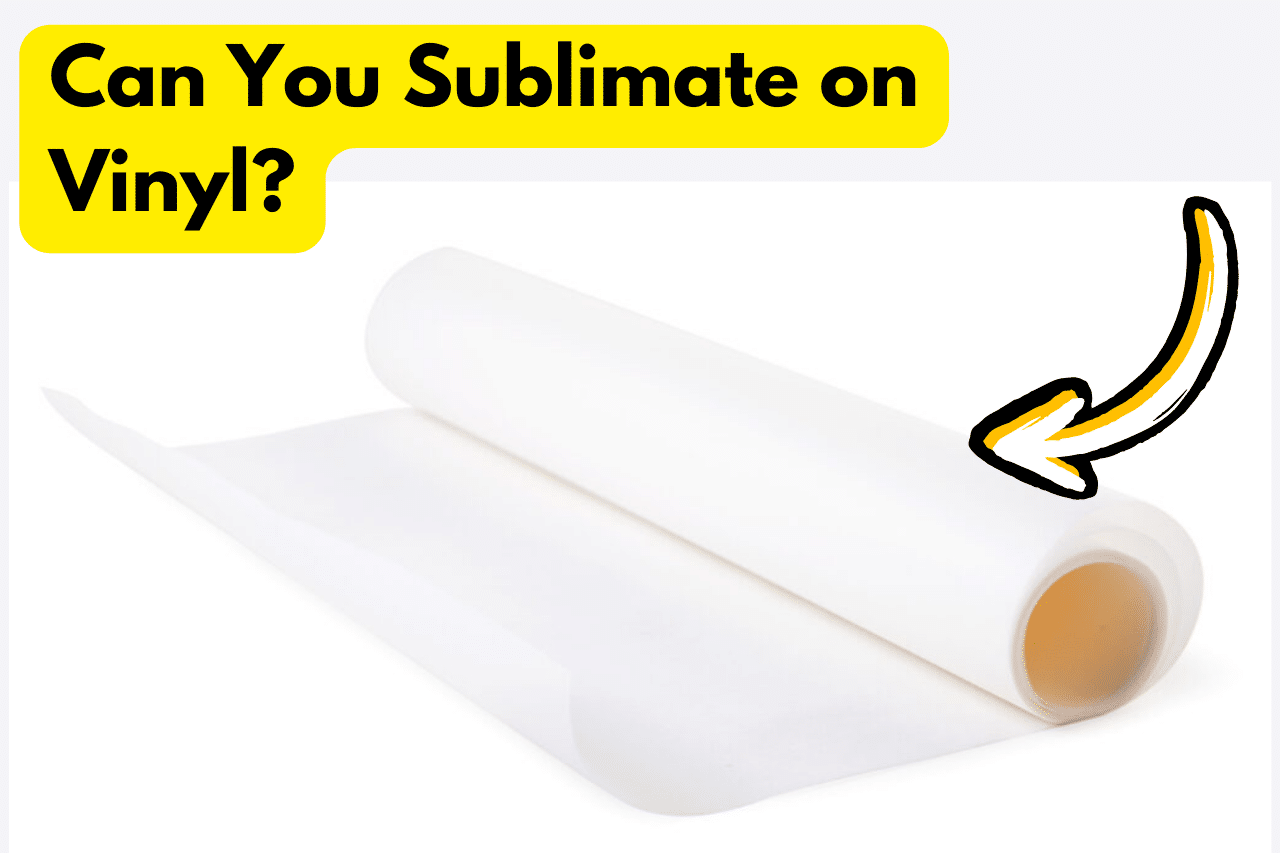Ever wondered if you can take your sublimation game to vinyl?
Well get ready for some good news, you absolutely can!
Sublimating on vinyl opens up a whole new world of possibilities for creating super cool customized shirts, decals, home decor, and more.
In this handy guide, you’ll get the inside scoop on everything you need to know about sublimating on vinyl. We’ll cover the supplies you need to get started and walk through techniques for different vinyl types.
You’ll even get tips for the best vinyl to use for sublimation so you get vibrant, durable results that don’t fade or crack over time.
Sound good? Then let’s dive in!
You May Also Like:
- What Printers Can Be Used For Sublimation? (8 Picks!)
- Sublimation vs Vinyl: Choosing the Right Printing Method
- What Is Sublimation Paper? (Types, Use Cases, etc)
- 6 Best Sublimation Inks In 2024 (I’ve Tested All !)
Can You Sublimate on Vinyl?
Yes, you absolutely can sublimate on vinyl. Sublimation relies on bonding dye to polyester fibers when heat and pressure are applied through a heat press.
The high heat causes sublimation ink to turn into a gas that infuses into polyester coatings.
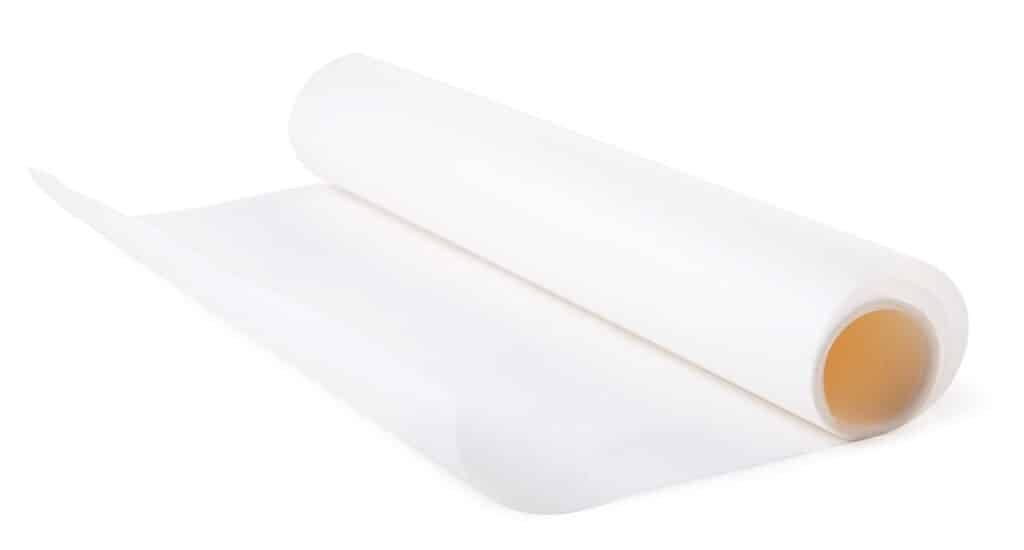
Many types of vinyl have a polyester coating that allows the sublimation process to work.
When you sublimate on these types of vinyl, you get vibrant, durable prints that won’t crack, peel, or fade over time. The colors become part of the vinyl. It’s a great alternative to other custom printing techniques.
Supplies Needed for Sublimating Vinyl
To get started with sublimating on vinyl, you’ll need just a few supplies. Having the right materials for the process is important. Here’s what you’ll need:
Sublimation printer
You’ll need a printer capable of printing with sublimation ink. Many popular home printers can be converted to sublimation with ink cartridge replacements. Always use original cartridges from the manufacturer.
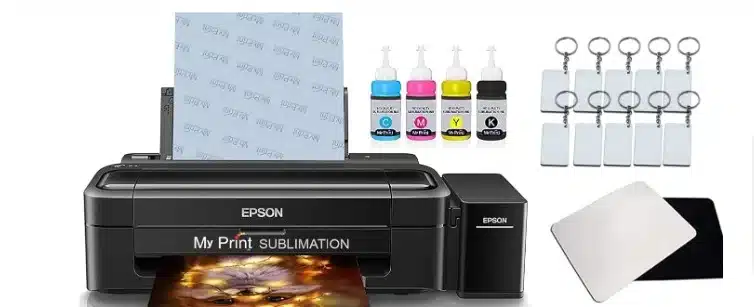
Sublimation paper
The special paper bonds temporarily with the sublimation inks.
You’ll print your designs on this paper before heat pressing it onto the vinyl. Use paper intended for the printer you have.
Vinyl
Choose vinyl intended for sublimation, like glitter HTV or adhesive vinyl with a polyester coating. Check product descriptions to ensure compatibility.
Heat press
You’ll need a heat press to transfer the ink from the paper to the vinyl. A normal craft iron won’t get hot enough to activate the inks. Look for an affordable starter press with precise temps.
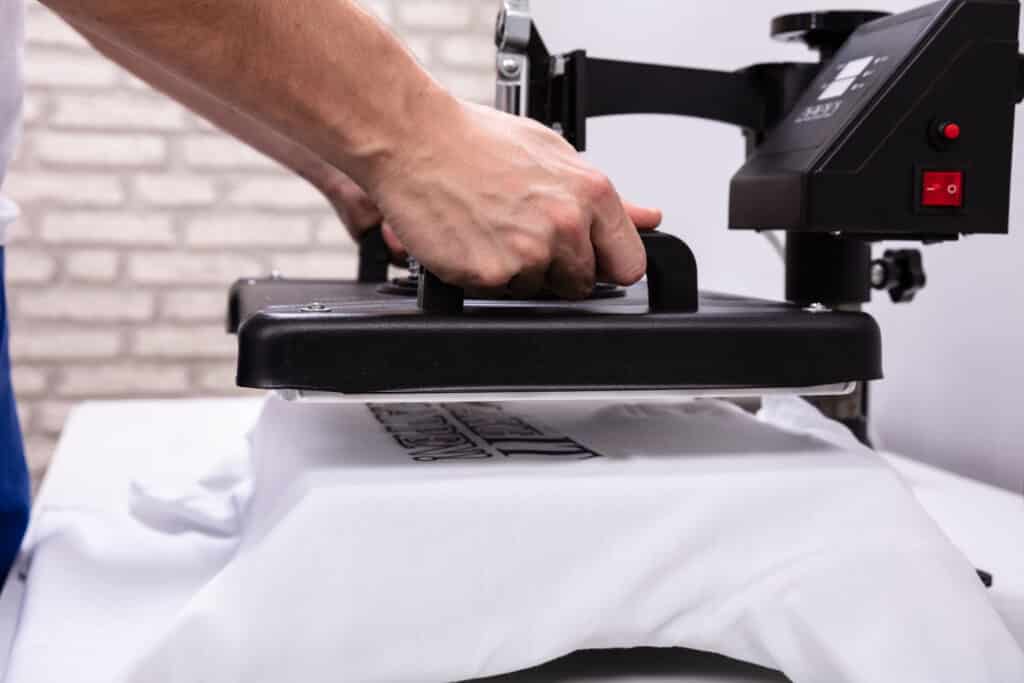
Heat-resistant tape
Helpful for securing the paper to the vinyl before pressing so it stays put. Use wider tape for larger designs.
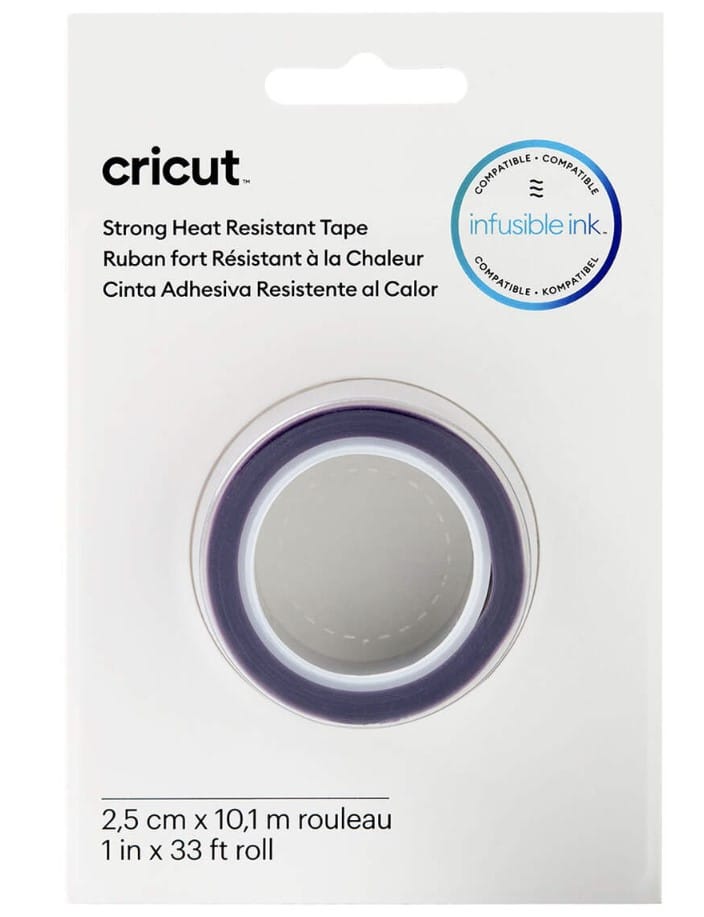
Parchment paper
Prevents scorching and ink bleeding during the high heat of sublimation. Use it on both sides of the item you’re pressing.
And that’s it! With just those basic supplies, you’re ready to start sublimating on vinyl.
Here is an expanded section with more detailed explanations under each point:
How to Sublimate on Vinyl
Sublimating on vinyl allows you to create vibrant, customized designs that last. The process differs slightly depending on the type of vinyl you use.
Sublimating On Glitter Vinyl
Glitter heat transfer vinyl, or HTV, is a very popular type of vinyl for sublimation. The glitter itself often contains polyester, which allows the sublimation ink to bond permanently during the heat transfer process.
To sublimate with glitter HTV, start by creating your design on your computer and printing it in reverse onto sublimation transfer paper.

Next, use an electronic cutting machine like a Cricut or Silhouette to cut your glitter HTV vinyl to a size about 1/8″ smaller on all sides than your printed design.
Pre-press the glitter HTV vinyl to your substrate, whether it’s a t-shirt, bag, or other material, using about half the recommended time listed on the HTV package.
Now place your printed sublimation transfer paper print-side down onto the glitter vinyl and secure it with heat-resistant tape.
Set your heat press to a temperature between 390°F and 400°F. Place your project into the heat press and close it firmly to apply pressure. Press for 30-60 seconds, a longer time than you would use for regular HTV.
Once pressing is complete, remove your project and allow it to cool completely before gently removing the transfer paper. This reveals your sublimated print brightly infused into the glitter vinyl.
Sublimating on Adhesive Vinyl
Clear permanent adhesive vinyl is another popular type to use for sublimation. This allows you to create customized decals, stickers, and more.
Start by printing your full-color design in reverse onto a sublimation release paper. Then, use your electronic cutting machine to cut a piece of clear permanent adhesive vinyl to the size and shape you want for your decal or sticker.

Cut two pieces of parchment paper larger than the vinyl size to protect your heat press. Tape your printed sublimation transfer paper to the clear vinyl, print side down, using high heat-resistant tape.
Place one sheet of parchment down on your heat-press, then add the vinyl, then the transfer paper, and top with the second parchment sheet.
Set your heat press to 350°F and press for 25-30 seconds. Carefully remove the parchment paper and gently peel away the transfer paper. Your design should now be infused into the clear vinyl!
Sublimating On White HTV
White heat transfer vinyl, or HTV, also works great for sublimation. The white base provides the perfect background for bright, colorful prints to stand out, especially in dark shirt colors.
As with other vinyl sublimation methods, start by printing your design in reverse on a sublimation release paper and cutting your white HTV about 1/8” smaller than the print size.

Pre-press the HTV vinyl to your shirt or fabric using about half the time recommended on the packaging to lightly adhere it.
Then, tape your printed sublimation transfer paper to the white HTV print side down. Carefully cover with a reusable Teflon sheet to prevent the transfer ink from bleeding set your heat press to 375°F and press firmly for 30 seconds.
After removing the paper, finish by pressing the HTV for the recommended time and temperature to fully bond it to the substrate.
Sublimating On Other Vinyl
In addition to glitter HTV, adhesive vinyl, and white HTV, there are a few other vinyl types that work for sublimation such as Cricut, Oracle, and Clear vinyl.
While the specific techniques vary slightly, the same basic method of applying a sublimation transfer print and using a heat press at the proper time and temperature applies across these vinyls.
Always check vinyl packaging to ensure sublimation compatibility before beginning your project.
Best Vinyl for Sublimation
Not all vinyl works for sublimation. Here are some top recommendations:
- Siser Glitter HTV

It is A favorite for t-shirts! The glitter provides a fun, textured background for the print. It comes in several colors but white shows designs most clearly.
2. Cricut Infusible Ink Transfer Sheets
This type of material works similarly to sublimation and permanently infuses designs into fabric. It’s easy to cut and apply with a Cricut machine.
3. Stahls’ SuperTEK Heat Transfer Vinyl
A bright white vinyl with a smooth finish and polyester layer is ideal for sublimation. It has a soft feel even after pressing.
For best results, read reviews and choose vinyl specifically made for sublimation printing. The product description will often indicate if it’s compatible.
Frequently Asked Questions
Here are answers to some frequently asked questions about sublimating on vinyl:
Does sublimation on vinyl last?
Yes! When done properly with the right materials, sublimation on vinyl is extremely durable.
The ink infuses with the polyester coating and won’t scratch, peel, fade, or wash off over time. Sublimated vinyl designs will last for years without losing any color or image quality.
Is it cheaper to do vinyl or sublimation?
Sublimation can be more expensive upfront since you need a special printer and ink. However, per item, sublimating on vinyl is often cheaper than ordering commercially pre-cut and printed vinyl.
There’s very little waste with sublimation compared to vinyl you have to weed. If you’re doing multiple items, sublimation offers more customization for less.
What type of vinyl can I sublimate on?
Look for vinyl labeled as appropriate for sublimation. The best types are white or glitter HTV and clear, printable vinyl with a polyester coating.
Avoid vinyl made for inkjet or laser printers, as sublimation ink requires a different process. If the vinyl doesn’t specify it’s for sublimation, it likely won’t work.
Wrapping Up
Sublimating on vinyl opens up so many options for creating customized shirts, decals, home decor, and more.
With the right supplies and technique, you can make durable prints that pop!
Be sure to use vinyl intended for sublimation and follow the recommended time, temperature, and pressure. Glitter HTV and clear adhesive vinyl tend to yield great results.
Now that you know the basics, unleash your creativity and share it with your loved ones.
